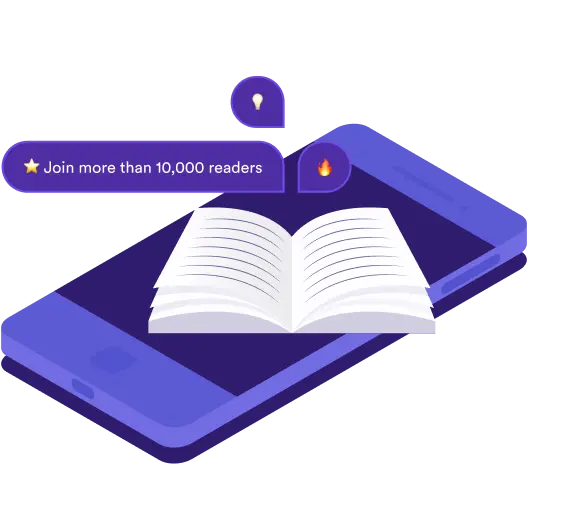Interested in SnackzLAB or SnackzAGENT? 👉🏼 This way!

Enjoying Snackz.ai?
Sign up!
or
I agree to the Privacy Policy and the Terms of Service.
Already have an account?
📩 Check your inbox!
A link to reset your password has been sent to your email address.
Reset Password
No worries! Just enter your email below, and we'll help you reset that password:
Enjoying Snackz.ai?
Sign up!
or
I agree to the Privacy Policy and the Terms of Service.
Already have an account?
📩 Check your inbox!
A link to reset your password has been sent to your email address.
Reset Password
No worries! Just enter your email below, and we'll help you reset that password:
Daniel Kahneman
Where would you like to order?
Please select your country to proceed with the checkout.
⚡ Free 3min Summary
Thinking, Fast and Slow - Summary
In 'Thinking, Fast and Slow,' Nobel laureate Daniel Kahneman explores the two systems that govern human thoughts and actions. This groundbreaking exploration of cognitive psychology explains how our fast, intuitive thinking (System 1) and slower, deliberate reasoning (System 2) work together to influence our decision-making processes. The book offers practical insights into understanding mental processes and improving decision-making skills in both personal and professional contexts.
Key Ideas
The Two Systems
System 1 operates automatically, quickly, and intuitively, relying on emotions and heuristics for snap judgments. System 2 is slower, more deliberate, and analytical, requiring conscious effort and logical reasoning. Understanding these systems' interplay is crucial to comprehending human thought and behavior.
Cognitive Biases
Our reliance on System 1's fast, intuitive thinking makes us prone to systematic errors in judgment known as cognitive biases, including the anchoring effect and availability heuristic. Understanding these biases helps us recognize and potentially mitigate their influence on our choices.
Prospect Theory
This theory challenges traditional economic models by showing that individuals are heavily influenced by loss aversion rather than purely rational utility maximization. People experience more pain from losses than pleasure from equivalent gains, affecting their risk-taking behavior.
FAQ's
The book introduces two systems of thinking: System 1, which is fast, automatic, and intuitive, and System 2, which is slow, deliberate, and analytical. It also discusses cognitive biases and Prospect Theory, which explains how people make decisions based on potential losses and gains.
By understanding the interplay between System 1 and System 2, as well as recognizing cognitive biases, readers can gain insights into their own mental processes. This awareness can help in making more informed and rational decisions in both personal and professional contexts.
Prospect Theory, developed by Daniel Kahneman and Amos Tversky, challenges traditional economic models by showing that people are more influenced by potential losses than equivalent gains. This theory is crucial in understanding why individuals often make irrational decisions and how they can better navigate risk and uncertainty.
💡 Full 15min Summary
The author unfolds the fascinating concept of two distinct systems operating in our minds, shaping the way we think and make decisions. System 1, the fast thinker, is driven by instinct and emotion, enabling us to react quickly to situations. It's our autopilot, effortlessly handling routine tasks and making snap judgments. System 2, on the other hand, is the slow, deliberate thinker. It requires conscious effort and engages our logical, analytical abilities when faced with complex problems or decisions.
He illustrates the interplay between these two systems with captivating anecdotes and examples. For instance, consider solving a simple math problem like 2+2. System 1 quickly arrives at the answer, while System 2 remains dormant. However, when confronted with a challenging problem like 27x14, System 2 takes charge as we mentally work through the calculations.
The author delves into the advantages and pitfalls of each system. System 1's quick thinking can save us in critical situations, like swerving to avoid an accident. However, it's also prone to errors, as it relies on shortcuts and heuristics that can lead us astray. System 2, while more accurate, can be slow and energy-consuming, making us reluctant to engage it.
Furthermore, he demonstrates how our minds often default to System 1, even when System 2 would be more appropriate. This can result in cognitive biases, distorted perceptions, and poor decisions. By understanding the dynamics of these two systems, we can learn to recognize when our thinking is being influenced by biases, and consciously engage System 2 to make better-informed choices.
Through this groundbreaking insight into the workings of our minds, the author empowers us to harness the strengths of both systems, ultimately enhancing our decision-making abilities and overall cognitive performance.
Enjoyed the sneak peak? Get the full summary!
Let's find the best book for you!
AdvertisementSection.TitleNew
AdvertisementSection.SubTitleNew

Get the books directly into your inbox!
✅ New Release
✅ Book Recommendation
✅ Book Summaries
Copyright 2023-2025. All rights reserved.